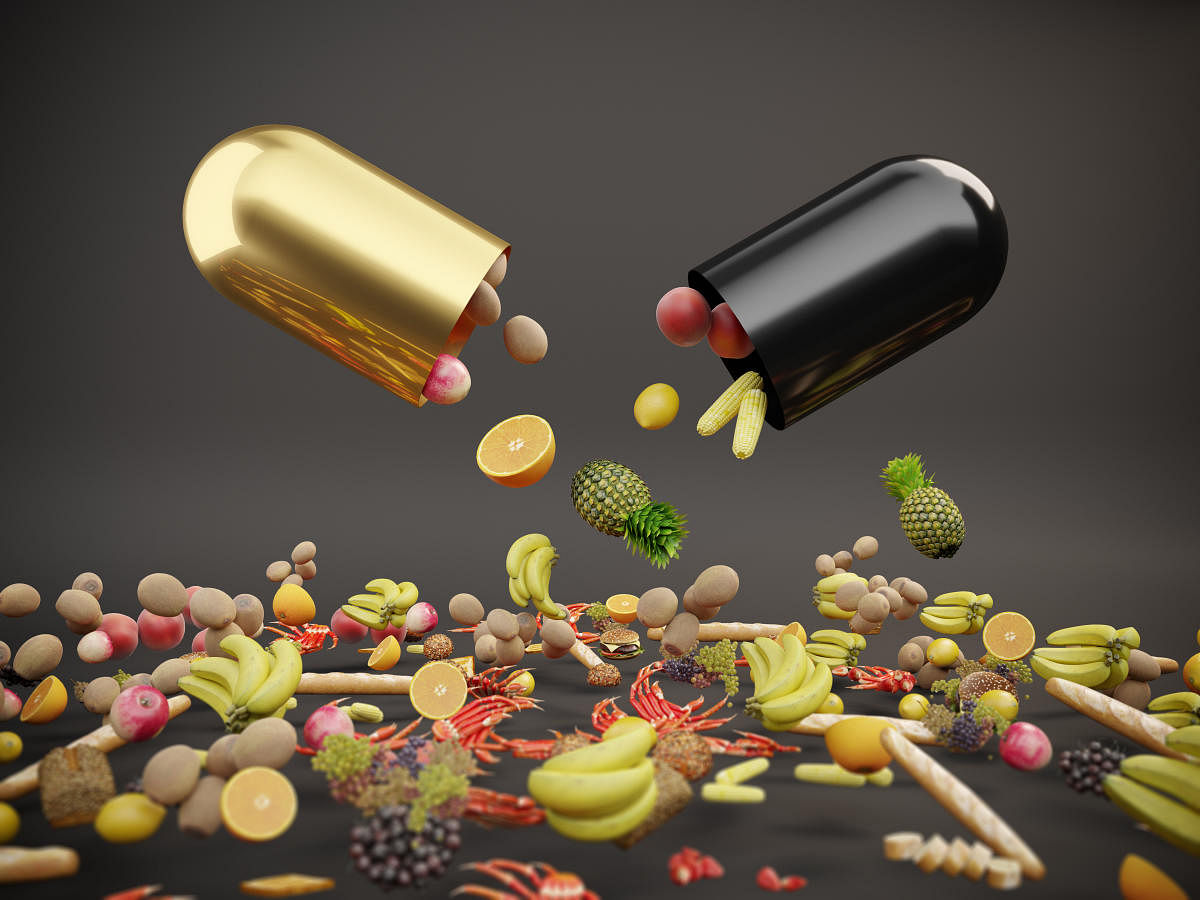
You might be glugging the goodness of herbs, inhaling steam and popping in multivitamins. Yet sometimes the tiny niggles on the health index might be pop-up reminders of the vitamins and nutrients that are falling short within. This depends on various dynamics including your age, childbirth history, work parameters, genetics, menopause, and more. Forget fancy diets that can lead to hormonal imbalances and related disorders, and focus on what your body needs most.
Iron ingestion
The most common is the deficiency of iron in women owing to menstruation. A furious dip in haemoglobin leads to anaemia. “Pregnant women are particularly susceptible to low iron as the amount of blood in their body increases to support the growing foetus,” explains nutritionist and wellness coach Neha Sahaya. With symptoms including breathlessness, pale skin, hair fall, brittle nails, fatigue and dizziness, the low iron index must be treated through an optimum diet. “
“Women aged 19 to 50 need about 18 mg of iron a day whereas a pregnant woman needs 27 mg. Consume nuts, seeds, dry fruits including apricots, raisins and dates, every day. A glass of vegetable juice with beetroot, carrot, pomegranate and a squeeze of lime is a good way to bring your iron levels up. Pairing iron-rich foods with Vitamin C betters absorption. Red meat and green vegetables make for excellent sources as well,” she adds.
I for Iodine
Most of us tend to ignore the absence of sufficient iodine in the body that can trigger growth abnormalities. Says nutritionist and lifestyle educator Karishma Chawla, “You require iodine for normal thyroid function and the production of thyroid hormones. The most common symptom of iodine deficiency is an enlarged thyroid gland, known as goitre. Pack in a generous quantity of strawberries, eggs, fish, dairy, and baked potatoes with the skin.”
Adds Neha, “Women need about 150 micrograms (mcg) every day. You can use iodine-fortified salt while cooking to increase your intake of iodine. Other sources of iodine include seaweed, tuna, shrimp and prunes. Dairy products also contain a small amount of iodine.”
Bring in B12
You need to keep a check especially if you are a vegetarian as this vitamin can be brought in through specific food consumption. It cannot be produced within your body and a lack of B 12 brings about symptoms including memory loss, fatigue, tingling sensation in hands and feet. “Girls, from the age of 14 and above, need 2.4 mcg of Vitamin B12 every day. This number goes up during pregnancy to 2.6 mcg. As we grow older, the absorption of B12 is reduced owing to a sluggish gut, and our urban lifestyle choices. This vitamin is important for making red blood cells and helps with neurological function,” says Neha. “B12 is available in animal and animal products like dairy products. The only reliable vegan sources of this vitamin are foods fortified with B12.”
Says Karishma, “Deficiency is common due to not enough B12 in the diet, inability to absorb B12 due to a lack of intrinsic factors responsible for its absorption — particularly in people on acid- blocker medication and those with inflammation in the bowel. Dietary sources include salmon, lamb, and eggs.”
Call of calcium
The most abundant mineral in our body that mineralises bone and teeth, and plays a preventive role in weight management and a protective role in regulating the polycystic ovarian syndrome is calcium. “Osteoporosis comes into play with a deficiency in calcium, especially if you are winging towards menopause. Together with Vitamin D, calcium works as a sound bone builder. You must include dairy foods, almonds, beans, dark green vegetables in your diet to boost calcium intake,” says Karishma.
“Women below 50 require 1,000 mg of calcium a day and those over 51 require 1,200 mg of calcium daily,” explains Neha. “Signs of calcium deficiency are often detected too late sometimes after we experience a fracture or significant bone loss. Sometimes body pain and toothache can also be an underlying sign of calcium deficiency.
Make sure you include dairy products, green leafy vegetables, sesame seeds, pulses and food fortified with calcium in your diet.”
Sunshine calling
The possible pigmentation of our skin keeps us out of the sun and impedes the absorption of the vital Vitamin D — a lack of the sunshine vitamin causes diabetes, obesity, fatigue, bone ache and depression. Says Karishma, “A healthy diet for women consisting of vitamin D rich sources like fatty fish including salmon, mackerel, sardines, egg yolks and natural sunlight would be beneficial. Keep a check on Vitamin D3 level through tests, and consume supplements under medical supervision, especially if you are a vegetarian.”
Adds Neha, “The Institute of Medicine has placed the recommended dietary allowance, or RDA, for Vitamin D at 600 international units (IU) per day for young adults and 800 IU per day for older adults. Ideally, spend 15 -30 minutes daily in the sun.”
Make way for Magnesium
A part of vital enzymatic reactions in our body, Magnesium is a major constituent of bones and forms part of the cell membranes. “Being present in smooth muscles, it facilitates the contraction as well as relaxation of muscles and helps to reduce muscle cramps,” explains Karishma. “Watch out for signs of deficiency in abnormal heart rhythm, muscle cramps, tremors, restless leg syndrome, fatigue, migraine and personality changes. Magnesium proficient sources include beans, nuts and sesame, pumpkin and sunflower seeds.”